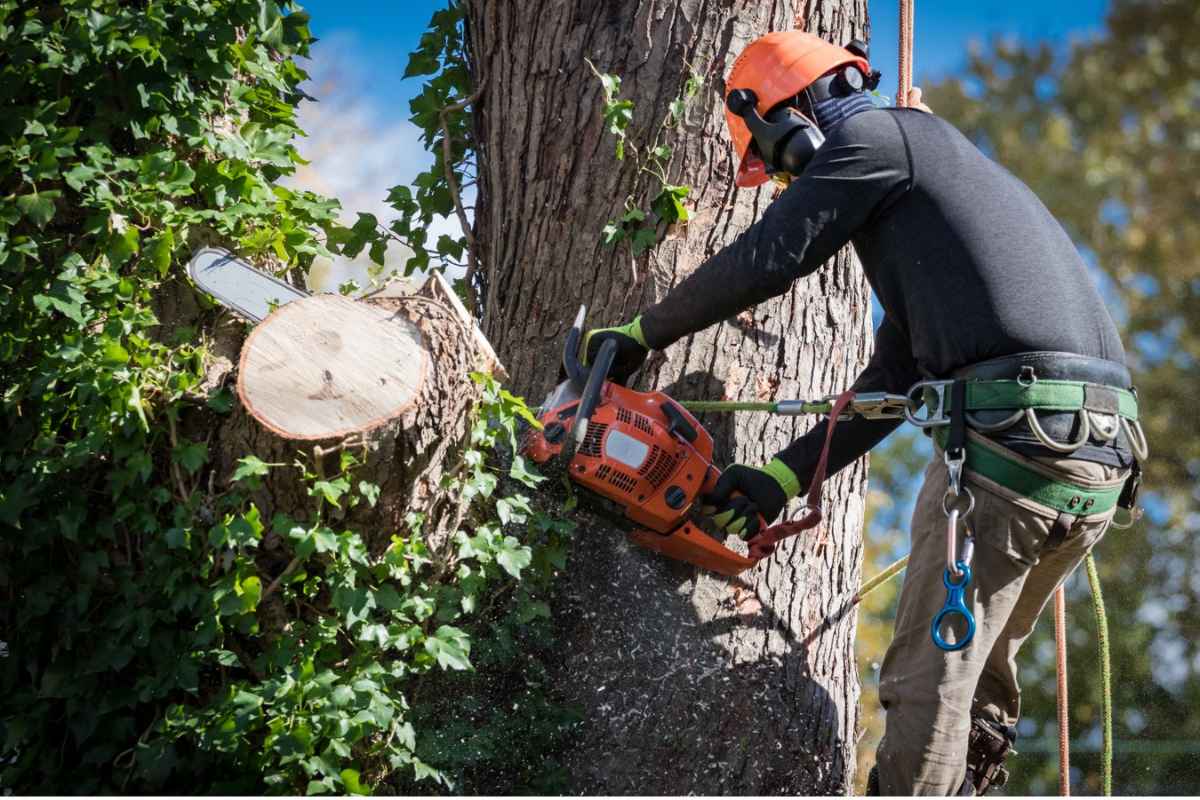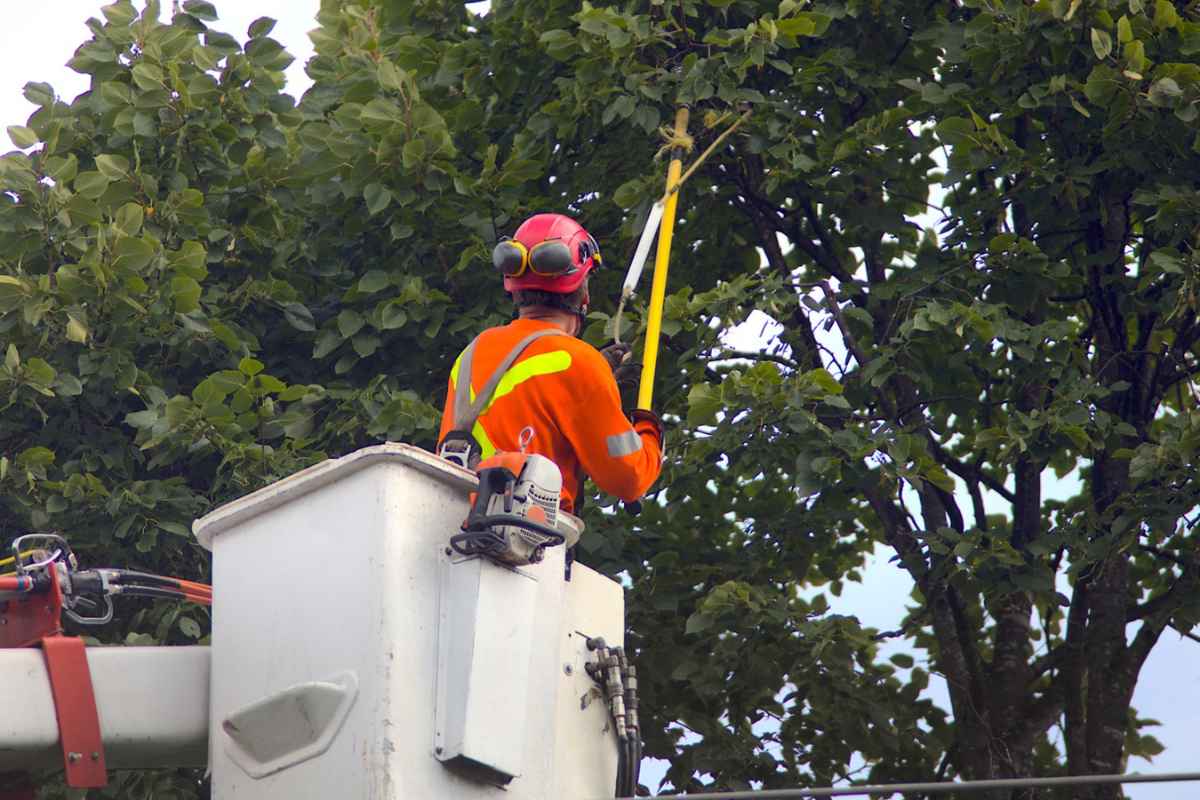Tree Removal Versus Tree Trimming: Which Is Best For Your Yard?
Choosing between tree removal and trimming shapes your yard's health and look. Each has unique benefits for a vibrant landscape. Learn to decide wisely.

Deciding between tree removal and tree trimming is a significant aspect of yard maintenance that can greatly affect the health and appearance of your landscape. While both practices are essential for the care and management of trees, they serve different purposes and have distinct impacts on your yard’s ecosystem. Understanding the nuances, benefits, and considerations can help you make informed decisions to promote a vibrant, healthy outdoor space.
Read on to learn which tree removal or tree trimming is the best solution for your yard.
Tree Removal
Tree removal is a critical service for managing the health and safety of your yard. It involves the complete extraction of a tree from its location, including the stump if it poses a hazard or interferes with landscaping plans. Removing a tree can be challenging, as it permanently alters the landscape and can have ecological implications. However, tree removal is necessary in certain circumstances to maintain your yard’s overall safety and aesthetic.

When To Consider Tree Removal
Deciding to remove a tree from your landscape isn’t a decision that should be taken lightly. Trees provide aesthetic beauty and shade and play a crucial role in the ecosystem. However, there are circumstances when removing a tree compared to tree trimming becomes necessary for safety, health, and landscaping reasons. These may include:
- Safety Hazards: The safety of your property and those around it should always be a priority. Dead, dying, or diseased trees can become unstable, posing significant risks. If a tree is precariously leaning or if large, dead branches are a common sight; it indicates that the tree might need to be removed to prevent potential harm or damage.
- Disease Containment: The health of your landscape is interconnected. When one tree is afflicted with a contagious disease, it threatens the entire garden. Certain tree diseases are known for their rapid spread and can quickly affect surrounding plants. Removing an infected tree is often the most effective method to halt the disease’s progression, safeguarding the rest of your yard.
- Property Interference: Trees growing too close to structures, whether they be homes, sheds, or power lines, can cause significant issues. Roots can undermine foundations, and overhanging branches can pose risks during storms. In such cases, tree removal is necessary to prevent damage and maintain the integrity of property structures.
- Landscaping Changes: Your vision for your landscape might evolve, necessitating changes that could include tree removal. Removing a tree can provide the necessary room for your new project, whether it’s for new construction, a redesign of your garden, or simply the desire for more open space.
While trees are invaluable components of any landscape, there are valid reasons for their removal. Assessing the situation carefully and considering the impact on safety, health, and landscaping plans will guide you in making the right decision. If you need help, working with a professional tree removal service would be invaluable as they can get the job done more efficiently and safely.
Tree Trimming
On the other hand, tree trimming is a maintenance practice aimed at preserving trees’ health and appearance. It involves selectively cutting away branches to improve a tree’s structure, enhance its appearance, and prevent potential hazards. Regular tree trimming can significantly benefit the longevity and aesthetics of your trees, making it an integral part of yard care.

Some key benefits of tree trimming include:
- Health Improvement: The vitality of a tree can be greatly enhanced by removing branches that are dead, diseased, or infested with pests. This preventive measure stops the spread of maladies to other parts of the tree or neighboring plants and contributes to the overall health and longevity of the tree.
- Safety Enhancement: Overgrown branches pose a hazard, especially when they loom over structures or walkways. Trimming these branches reduces the risk of property damage and personal injury, particularly in severe weather conditions when the risk of branches falling is heightened.
- Aesthetic Appeal: A well-trimmed tree is a sight to behold. It adds to the visual appeal of your yard, showcasing a well-cared for landscape. Regular trimming helps maintain a tree’s shape and appearance, enhancing the overall aesthetic of your outdoor space.
- Sunlight and Air Circulation: Strategic trimming can significantly improve the penetration of sunlight and airflow within the tree’s canopy and the landscape below. This benefits the tree, promotes healthier growth, and positively affects the understory plants.
Incorporating tree trimming into your regular yard maintenance schedule can lead to a healthier, safer, and more beautiful outdoor environment. The practice is essential for the longevity and vitality of your trees and the overall aesthetic of your landscape.
When To Opt for Tree Trimming
Tree trimming is an essential aspect of landscaping beyond mere appearance; it’s pivotal for your outdoor environment’s health, safety, and enjoyment. Recognizing the right moments to opt for tree trimming can make a significant difference in maintaining a vibrant and secure yard. Here are key instances when tree trimming should be considered:
- Regular Maintenance: To sustain their vitality and aesthetics, trees require consistent care. Regular trimming is necessary to remove dead or weakened limbs, improving the tree’s appearance and structural integrity. This routine maintenance ensures trees retain their desired shape and contribute positively to the landscape design.
- Disease Prevention: Proactive trimming plays a crucial role in the health of a tree. By removing branches that are diseased or infested with pests early on, you can prevent the ailment from spreading to healthier parts of the tree or even to neighboring trees, thus safeguarding the well-being of your entire garden.
- Safety Concerns: Overgrown branches can pose significant risks to both property and personal safety, especially if they loom over buildings, walkways, or recreational areas. Trimming these branches can help prevent potential damage or injury, particularly in areas prone to severe weather conditions.
- View Restoration: Sometimes, the growth of a tree can obstruct scenic views from your property, diminishing the enjoyment of your outdoor space. Strategic trimming can open these views, enhancing the pleasure you derive from your landscape while maintaining the health and structure of the tree.
Incorporating tree trimming into your landscape management practices at these critical times can lead to a healthier, safer, and more enjoyable outdoor living space. It’s an investment in the longevity and beauty of your yard.
Making The Right Choice For Your Yard
When deciding whether to trim or remove a tree, it’s crucial to approach the matter carefully, equipped with the right knowledge and expert advice. This process involves more than just a cursory evaluation; it requires a thorough analysis of various factors that can impact your landscape and the well-being of your outdoor environment.
Here are key steps to guide you through this critical decision-making process:
- Assess The Tree’s Condition
The first step in making an informed decision about tree care is to thoroughly evaluate the health and stability of the tree in question. Consulting with a certified arborist is invaluable in this stage, as they possess the expertise to accurately diagnose the tree’s condition. They can assess signs of disease, pest infestation, structural integrity, and overall vitality.
This professional assessment can determine if the tree can be salvaged through trimming or if removal is the only safe and viable option. The goal is to preserve the tree when possible, but not at the expense of safety or the health of other plants in your yard.
- Consider Long-term Impacts
The decision to remove a tree shouldn’t be taken lightly, given its significant implications for your landscape’s appearance and ecological balance. Trees contribute to the ecosystem by providing oxygen, improving air quality, offering shade, and supporting wildlife. Removing a tree can disrupt this balance, affecting the immediate area where the tree stands and the broader garden ecosystem. It’s important to weigh these long-term environmental impacts against the immediate need for removal.
- Comply With Local Regulations And Permits
Navigating the legal landscape is another critical step before proceeding with tree trimming or removal. Many jurisdictions have specific regulations governing these activities, often requiring permits for work on trees of certain species, sizes, or locations (such as those near public roads or property lines).
Failure to comply with these regulations can result in fines or legal complications. It’s essential to be informed about and adhere to local ordinances to ensure your tree care activities are legally compliant.
- Engage In Professional Consultation
The importance of professional guidance can’t be overstated. Arborists and tree care specialists can bring a wealth of knowledge and experience, ensuring that any action taken—be it trimming or removal—is conducted safely, effectively, and with the tree’s and landscape’s best interests in mind. These professionals can also offer advice on replacement plantings and how to care for the remaining trees and landscape to ensure ongoing health and beauty.
By taking these steps, you can ensure your decision is informed, responsible, and beneficial for your immediate landscape needs and your outdoor space’s long-term health and aesthetics.
Wrapping Up
Both tree removal and tree trimming play vital roles in yard maintenance, each serving specific needs. While tree removal is often a last resort due to its permanent impact, it can be necessary for safety and landscape management. Tree trimming, on the other hand, is essential for the ongoing care and aesthetic maintenance of trees. By keeping the information mentioned above in mind, you can make informed decisions that enhance your outdoor space’s health, safety, and beauty.




Comments ()